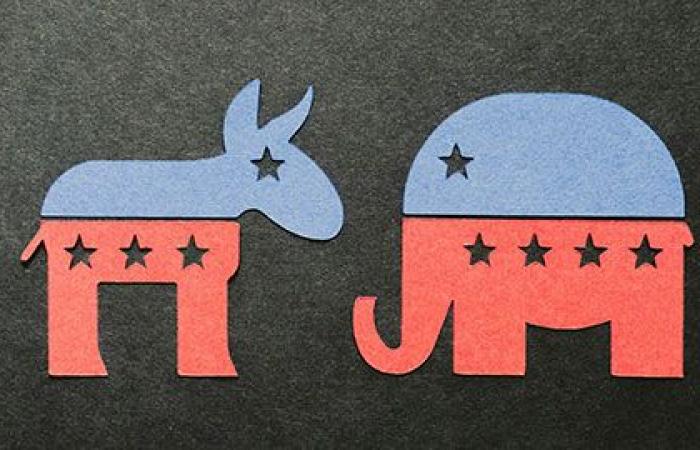As the presidential campaign enters its home stretchwhether it be polls or ratings of bookmakers, the outcome of the vote seems closer than ever. After riding a wave of popularity in the weeks following her surprise nomination, Kamala Harris sees this trend eroding and the polls are now particularly undecided in the swings states, these states are decisive for the outcome of the election.
Yet helped by a favorable economic record inherited from Joe Biden of whom she was vice-president, the candidate for the White House is difficult to capitalize on these successes. Inflation now under control – at 2.4% over a rolling year –, unemployment close to full employment at 4.1% and sustained growth – around 3.5% on average per year between 2021 and 2024 –, finally stock markets sailing from record to record, are not enough to convince voters. The inflationary wave which reduced the purchasing power of the American consumer between 2021 and 2022 and the drying up of excess savings during the Covid period, for 80% of the population, undoubtedly contribute to qualifying the perception of the economic balance sheet of the Biden-Harris team.
Uncertain as to its outcome, the campaign nevertheless makes the economic consequences of the future elected official fairly clear.
If large divergences appear in the candidates’ program, they still have some similarities. They are largely expensive despite a deficit estimated at 6.6% in 2024 and a debt-to-GDP ratio approaching 100%. Protectionism, particularly against China, is also a common denominator.
On the other hand, many notable differences appear beneath the surface.
By detailing its economic program in a document of nearly 80 pages called « A new way forward for the middle class », the Democratic candidate unveils a program resolutely oriented towards working-class and middle-class households, as well as small businesses. Supporting the most modest through essential needs – food, health and housing – its program also promises to be favorable to innovative sectors: electric automobiles, semiconductors or artificial intelligence in particular.
Trump’s economic program, distilled into a more global and more synthetic document entitled ” Make America great again », seems favorable to certain sectors : military-industrial complex, support of cheap fossil energy faithful to its mantra « Drill baby drill », or even a 180° turn from automobiles to thermal vehicles. Candidate Trump also seems in favor of deregulation in general, and on cryptocurrencies in particular.
The American bank Goldman Sachs has developed equity indices representative of the values to be favored in the event of a victory for each of the two parties.and they clearly corroborate the polling trends: over a month, since the debate between the two candidates, the basket of “democratic” actions has fallen by around 5% while that associated with the Republicans has increased by more than 5%. See you on November 5 to find out the lucky one.
Writing completed on 11.10.2024 – Clément Inbona, Fund Manager, LFDE






